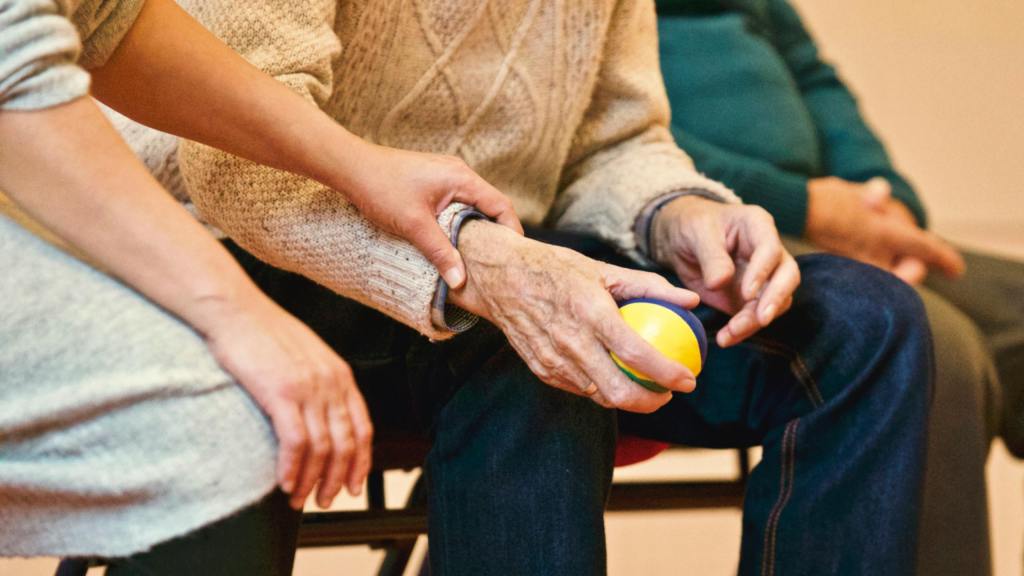
Understanding and Managing Alzheimer’s Aggression: Tips for Caregivers
Exploring Potential Underlying Causes of Aggression in Alzheimer’s Patients
Most of the time, a change in a patient’s behavior is the result of some underlying cause. One of the most common causes that can lead to agitated and/or aggressive behavior is a lack of recognition. The inability for a patient to recognize something or someone can be a major trigger for a change in behavior. Other possible causes to be mindful of include physical issues such as pain, constipation, soiled underwear, or medication side effects. There can also be environmental causes, like a change in routine or place or being pressured to do something the patient is uncomfortable with. Emotional causes like depression or a feeling of loss are also possible factors. Taking the time to consider these potential causes of aggressive behavior or agitation and maintaining clear and calm communication with the patient are important ways to gain a better understanding of the situation.
Recognizing Early Warning Signs of Aggression in Alzheimer’s Patients
Noticing behavioral changes in a patient with Alzheimer’s is critical. As the disease progresses, there can be many new behaviors that a patient displays, such as a lack of interest in things they formerly enjoyed, imagining things that aren’t there, wandering or pacing, and misunderstanding sights and sounds. Be mindful of how these changing behaviors are affecting the patient and if these changes correspond to their level of agitation. One of the most effective proactive actions you can take is to note changes in behavior and either diffuse that situation by addressing the underlying cause, or helping the patient adapt to a new reality in the case of long-term changes that are beyond anyone’s control. For example, if the patient has moved from their home to the home of a family member, helping them adapt by placing familiar objects in their surroundings can bring comfort and help to ease agitation as they acclimate to the new environment.
Effective Strategies for Coping with Aggression in Alzheimer’s Patients
As a caregiver, there are several things that you can do to deal with aggressive behavior. In the event of an aggressive incident, first addressing any physical harm to yourself, the patient or anyone else is an obvious first priority. Maintain a safe distance during the incident, keep calm, and speak slowly and as clearly as possible. If there is a temporary stressor involved in the situation, redirection may help to focus the patient on another activity. There are also some useful tips that can generally help to provide a calm environment:
- Always listen to a patient’s frustrations – show that you understand and do your best to reassure the person
- Maintain a simple and structured routine for each day
- Reduce noise, clutter, and the number of visitors at any given time
- Limit junk food and stimulants like caffeine
- Build quiet time into the daily routine
- Use music, reading, and walks to focus attention
Allowing the person as much control over their day as they can manage is also important. Keeping family pictures and objects with important meaning close by is also recommended as a part of quality Alzheimer’s care. Being witness to or involved in an aggressive incident can be overwhelming for even the most seasoned caregiver. Perhaps the most important part of this whole equation is you. Don’t forget to give yourself breaks from care whenever you are able. It’s important to take care of yourself when you are giving so much of your time and attention to the care of others. Always remember that a patient with Alzheimer’s is dealing with perceived or actual changes to their environment and their personal physical and mental well-being and are not maliciously acting out. It can be hard not to take outbursts personally, but you really shouldn’t. As a mindful caregiver, you have a lot of control over the care of the patient and your actions can go a long way in creating a supportive, comfortable environment.
More insights like this:
-

Delirium vs. Dementia: Causes, Symptoms, Treatments, and Preventative Measures
Read more: Delirium vs. Dementia: Causes, Symptoms, Treatments, and Preventative Measures5 Key Things Family Caregivers Need to Know About Delirium and Dementia Onset and Course Are Key Clues That Caregivers Should Watch Closely Delirium develops suddenly (hours or days) and often fluctuates; dementia progresses gradually over months or years. Acute changes in thinking or attention should trigger urgent medical evaluation. Delirium and Dementia…
-

What Caregivers Should Know About Early-Onset Alzheimer’s
Read more: What Caregivers Should Know About Early-Onset Alzheimer’sSymptoms, Stigma, Diagnosis, and Treatment Early-onset Alzheimer’s disease, also known as younger-onset, is the development of Alzheimer’s symptoms between the ages of 30 and 65. A diagnosis is relatively rare at a younger age, and while over 6 million people in the United States are living with Alzheimer’s disease, the true prevalence of early-onset is uncertain.…
-

15 Tips on Transitioning a Loved One to Memory, Dementia, or Alzheimer’s Care
Read more: 15 Tips on Transitioning a Loved One to Memory, Dementia, or Alzheimer’s CareAs a part of your journey caring for someone with Alzheimer’s or another form of dementia, there may come a time when the effects of the disease become too much for a caregiver to handle, and one must seek alternative care options. When deciding the right time to transition your loved one to…